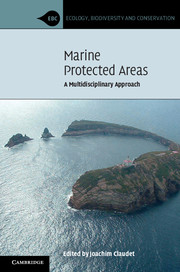Introduction
Published online by Cambridge University Press: 05 August 2012
Summary
Early in their history, humans were just a new species, Homo sapiens sapiens, evolving within a broader history, natural history. As they continually struggled for survival, the world around them seemed probably hostile and inhospitable. Death from predation, starvation, and disease was rife. At the same time, like all other species, humans used their environment to meet their needs for food and habitat, and, over time, for some cultural artefacts. With the evolution of their customs and the invention of agriculture, humans settled and created the first civilizations. Their relationship with nature changed. Humans then shaped their environment, the use of nature turned into exploitation. Rationalization was not far off.
Changes wrought by humans on terrestrial realms were clearly visible. The awareness that these changes were impacting the natural environments led to the creation of the first nature reserves. Freud (1916) found in these creations a perfect parallel with the creation of the mental realm of phantasy, “withdrawn from the reality principle.” For him, “a nation whose wealth rests on the exploitation of the produce of its soil will yet set aside certain areas for reservation in their original state and for protection from the changes brought about by civilization” (Freud, 1911). “The requirements of agriculture, communication and industry threaten to bring about changes in the original face of the earth which will quickly make it unrecognizable. A nature reserve preserves its original state which everywhere else has to our regret been sacrificed to necessity. Everything, including what is useless and even what is noxious, can grow and proliferate there as it pleases” (Freud, 1916). Now, a trend in conservation practice is no longer to use reserves only as conservation fortresses outside of human “necessity” but rather to use them as management tools to improve the sustainability of human uses, creating trade-offs between conservation and use.
Information
- Type
- Chapter
- Information
- Marine Protected AreasA Multidisciplinary Approach, pp. 1 - 8Publisher: Cambridge University PressPrint publication year: 2011
References
Accessibility standard: Unknown
Why this information is here
This section outlines the accessibility features of this content - including support for screen readers, full keyboard navigation and high-contrast display options. This may not be relevant for you.Accessibility Information
- 4
- Cited by
